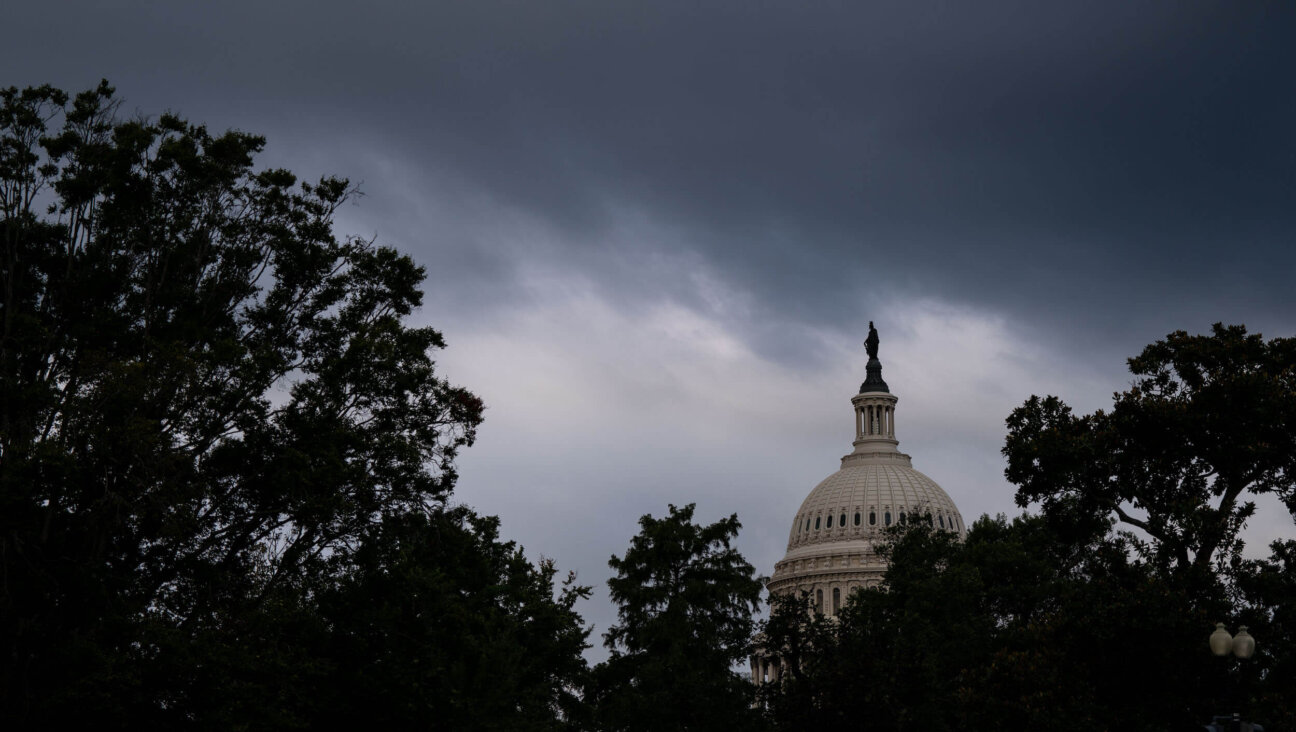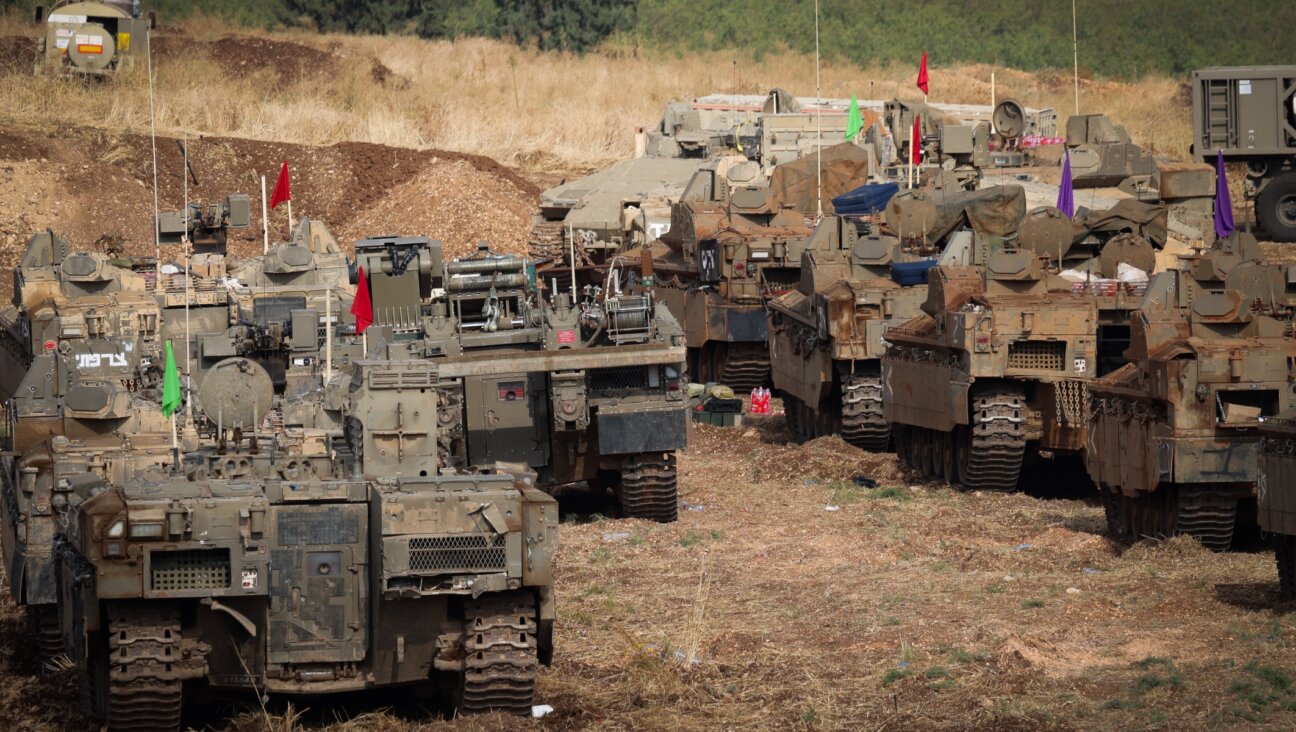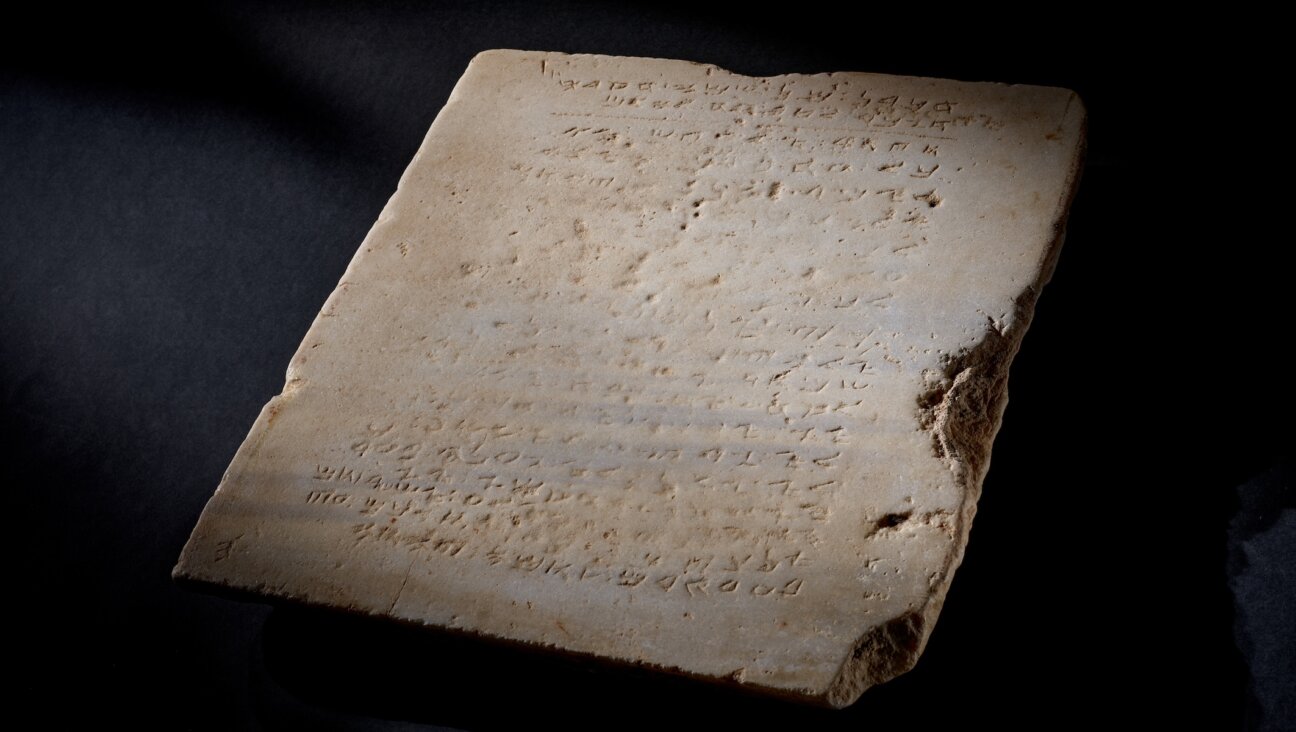The ‘Cancellation’ of Heschel

Notepads: Richard Dreyfuss Image by Getty Images
Remembering Abraham Joshua Heschel, the Man — Forgetting “Imagining Heschel,” the Play
As soon as I saw the ad for Colin Greer’s new play, “Imagining Heschel” — starring Richard Dreyfuss as the theologian whom Edward Kaplan, author of “Spiritual Radical, Abraham Joshua Heschel in America 1940–1972” (Yale University Press, 2007), heralds as “one of America’s greatest religious leaders,” — I called for tickets. It was a full house at the Cherry Lane Theatre at the November 5 performance of the two-character play, which centers on the secret meetings between Heschel and the Vatican’s Cardinal Bea during a heady time for Catholic-Jewish dialogue. I was surprised to see, however, that the actors were walking around the stage with spiral stenography pads.

Notepads: Richard Dreyfuss Image by Getty Images
After the performance, I was gung-ho to write my review, but needed some more information. I called the press people, who were telling writers to hold off on publishing their reviews because the November 4 opening night performance had been postponed. Ultimately, that performance was canceled, and the play was scheduled to continue through November 28. I was told that, instead of writing a review, it would be okay to write an article about Heschel. Not until I read Patrick Healy’s November 20 blurb in The New York Times did I learn the reason that Dreyfuss and Rinde Eckert, who portrays Cardinal Bea, were carrying notebooks: Dreyfuss’s contract stipulated that the actor did not have to memorize his lines. And there were but a few days of rehearsal.
As a teenager in 1947, I worked at the YIVO Yiddisher Visenschaflikher Institut/Jewish Scientific Institute (now known as the YIVO Institute for Jewish Research) at its headquarters, which was then on Manhattan’s Upper West Side, on 123rd Street and Broadway. There I heard Heschel, a YIVO board member, speak. That was the year Dreyfuss was born. Heschel and my father (Mordechai ‘Matvey’ Bernstein) had known each other in prewar Warsaw and would meet again in New York in the 1960s. The two-character play centers on the secret meetings between Heschel and Bea during a heady time for Catholic-Jewish dialogue. It was a period fraught with angst that eventually culminated in the 1965 Nostra Aetate (In Our Time]), “Declaration on the Relation of the Church to Non-Christian Religions.” There is no indication of how closely Greer honed the actual Heschel-Bea dialogues. And without a script in hand, I do not recall if at any point there is mention of the American Jewish Committee’s role in that “secret” Heschel-Bea meeting. According to the AJC, with whom I checked, the meeting was not, as Greer states in the program notes, by invitation to Heschel from Cardinal Bea, but an unpublicized meeting brokered by the AJC on its own behalf, held March 31, 1963, at which other scholars were present. But then, the play is titled “Imagining Heschel.”
In the fall of 1965, Rabbi Samuel Schafler invited Heschel to speak at Temple Gates of Prayer, in the Flushing section of Queens. The auditorium was packed. My parents, settled in Flushing following a 10-year sojourn in Argentina (where my father worked at Buenos Aires’s YIVO), sat in the front row. Expecting a commentary on the then political or Catholic-Jewish arena, Heschel made his theme “The Sanctity of the Sabbath,” a moving theological treatise on how one should observe this singular day. Though fluent in half a dozen languages, my father’s English was problematic. “Host farshtanen vos er hot gezogt?” (“Did you understand what he said?”) I asked him. He nodded. “Keyn shum nayes” (“Nothing new)”. “Er hot gegebn di zelbe droshe in Varshe in 1938”(“I heard him give the same sermon in Warsaw in 1938”).
Post-lecture, Schafler and his wife, Sara, invited a small group to their home for refreshments. My father, a secularist whose educational trajectory included the Slonim, Baranovitch and Mir yeshivas, spent much of the evening in amiable disputation with Heschel in Talmudic-seasoned Yiddish. I revisited Heschel’s lecture with Rabbi Yochanan Muffs (my husband’s cousin), a professor of Bible and Jewish thought at the Jewish Theological Seminary. Muffs, who died December 6, 2009, had been a student and later a colleague of Heschel’s at the JTS. His wife, Yocheved Muffs, had been, before their marriage (when she was known as Judith Herschlag), as Kaplan notes in his book, “Heschel’s dynamic [editorial] helper — his ‘ear.’” I asked Yochanan Muffs about Heschel’s imperative in relation to observing the Sabbath. He smiled and shrugged his shoulders: “Judaism is flexible,” he responded. A lover of jazz and classical music, and a capable pianist, Muffs said: “Listen, if instead of going to shul, you commit yourself to going to the philharmonic or a concert every Shabbos as a way of celebrating the Sabbath, so be it. But, it has to be an ongoing commitment.”
NYC Veterans Day Parade Marks 60th Anniversary of 1950 Korean War
It was a glorious, sunny day for the November 11 Veterans Day parade up Manhattan’s Fifth Avenue. Launched with the laying of a wreath, and a Marine Corps rifle salute at the Eternal Light Monument in Madison Square Park, at Fifth Avenue and 23rd Street, the parade marked the 60th anniversary of the Korean War of 1950 and featured a special tribute to the U.S. Air Force. The parade’s theme was “Freedom is not free,” which is inscribed on the Korean War Veterans Memorial, in Washington, D.C. On the dais: was Mayor Michael Bloomberg, whom James Roy, chief master sergeant of the Air Force, presented with an American flag that was specially flown over Iraq for this event. The veterans “are the people who exemplify the best of America,” Bloomberg said. Others on the dias included New York State Governor David Paterson, City Council Speaker Christine Quinn, City Comptroller John Liu **and **Jacob Goldstein, senior Jewish chaplain of the Armed Forces of the U.S. Army Reserve & Active Duty. “This is the largest Veterans Day parade I have seen in my 35 years of service,” Goldstein said in our post-parade chat. Goldstein, who extended his duty by another two years, is an Orthodox army chaplain in the tradition of the Jewish chaplaincy dating back to the Civil War. The rabbi (who owns an army issue yarmulke that matches the camouflage pattern of his army combat uniform) told me — in beautiful Lithuanian Yiddish — that he became an army chaplain with the blessing of the Lubavitcher rebbe, Menachem Schneerson. “The rebbe told me, ‘Dos is a glaykhe zakh” (“It’s a good thing”).
The more than 18,000 parade participants along Fifth Avenue from 26th to 52nd streets were cheered by an estimated 660,000 viewers, including a large contingent of tourists, one of whom turned to me and exclaimed: “C’est merveilleux!” (“It’s marvelous!) Participants included the members of the wounded warrior project; the New York Department of Jewish War Veterans of the United States of America, and Joanne Fried, director of media and public relations for U-Haul International, Inc. Fried walked alongside a caravan of U-Haul vehicles — each with a different service symbol on its side. In addition to the traditional high school marching bands from across America, and contingents from the armed services, there was the heart-twinging sight of the American WWII Orphans Network marchers and ROTC cadets carrying oversize photos of their relatives who had served. There were cheers for contingents from Educated Canines Assisting With Disabilities, which trains and places service dogs, and the Wounded Warrior Project. Also marching was a contingent of the Native American Women Warriors, dressed in Native Indian garb. Though these women are all on active duty in Iraq, they were granted leave to participate in the parade.
Brain Injuries — Civilian And Military — Highlighted at Brain Injury Association Gala
“What I am doing here is helping others,” said Elliot Finkelstein, an honoree at the November 10 “Third Annual Journey of Hope Gala” of the Brain Injury Association of New York State, which also honored retired U.S. Army sergeant Jeanette Arroyo and Daniel Trush, co-founder of Daniel’s Music Foundation. The gala evening, with its Marine Corps League color guard, was held at New York City’s Prince George Ballroom and put the spotlight on both civilian and military victims of brain injuries. Honorary co-chair, award-nominated actress Lorraine Bracco — best known from her role in the HBO megahit “The Sopranos” — informed: “Every 23 seconds, another person in the U.S. sustains a brain injury. It is the signature injury of the wars in Iraq and Afghanistan.” The range of brain injuries victims cited included student athletes, a mother who fell down steps and hit her head, a person who was hit by a bus.
Though the entire Finkelstein family was honored, it was Elliot and his late wife, Sandy, who helped found BIANYS after their son, Michael, sustained a brain injury in a car accident and spent many months in a rehabilitation hospital. Aroyo spoke of her determination to have a productive life following her “Iraq brain injury.” Still challenged following a coma and nearly a year’s hospitalization, Trush, a victim of a brain aneurism that burst while he was playing basketball, told how he founded DMF to provide free musical instruction to people with disabilities. Also honored was Mary Hibbard, director of psychology and professor of rehabilitation medicine at New York University Langone Medical Center’s Rusk Institute of Rehabilitation Medicine. The event was hosted by News 4 New York co-anchor David Ushery.
A message from our CEO & publisher Rachel Fishman Feddersen

I hope you appreciated this article. Before you go, I’d like to ask you to please support the Forward’s award-winning, nonprofit journalism during this critical time.
We’ve set a goal to raise $260,000 by December 31. That’s an ambitious goal, but one that will give us the resources we need to invest in the high quality news, opinion, analysis and cultural coverage that isn’t available anywhere else.
If you feel inspired to make an impact, now is the time to give something back. Join us as a member at your most generous level.
— Rachel Fishman Feddersen, Publisher and CEO





















